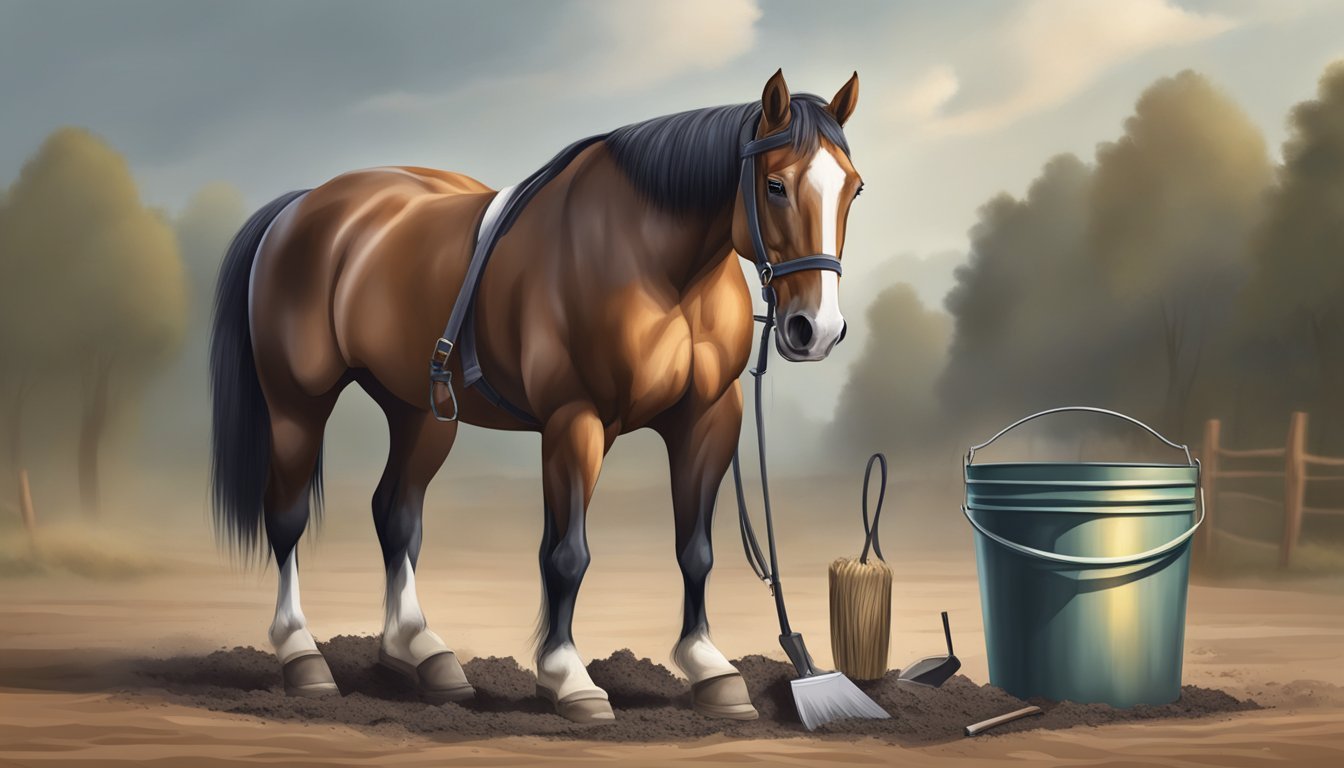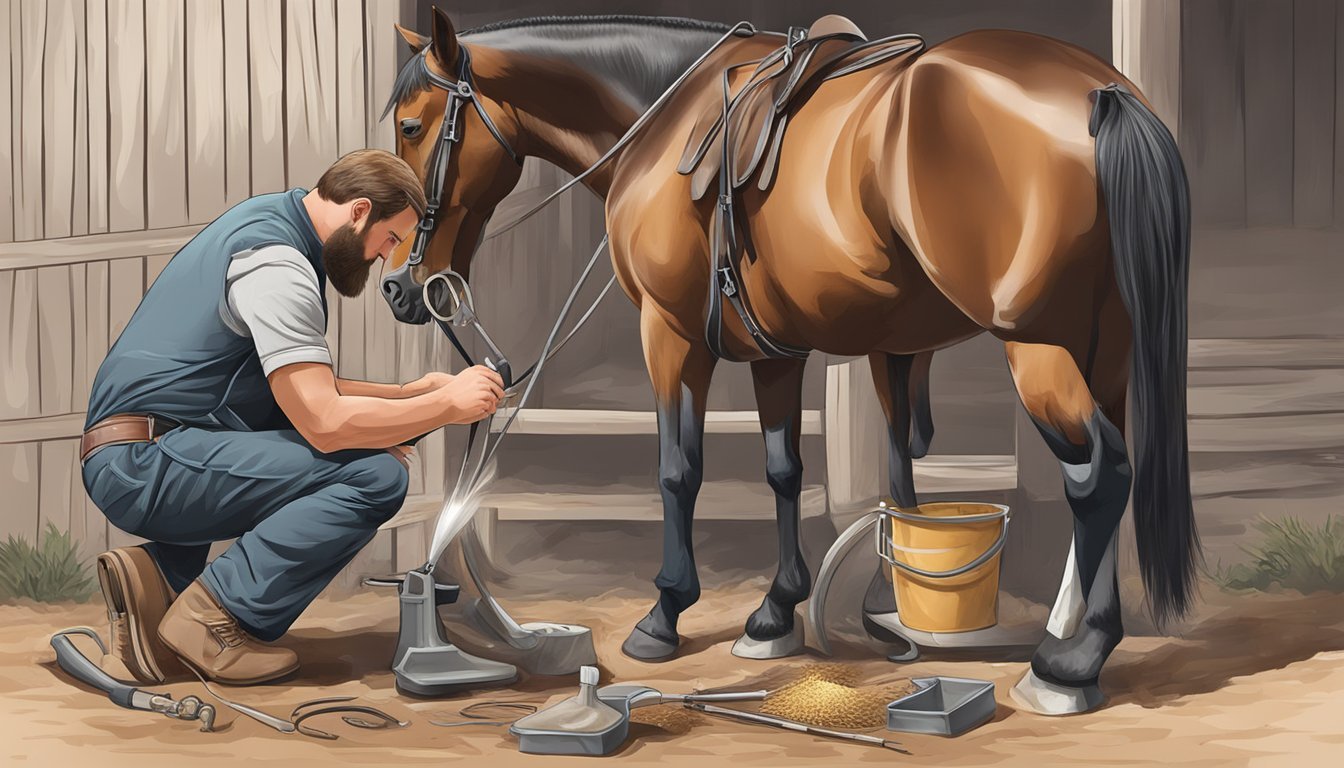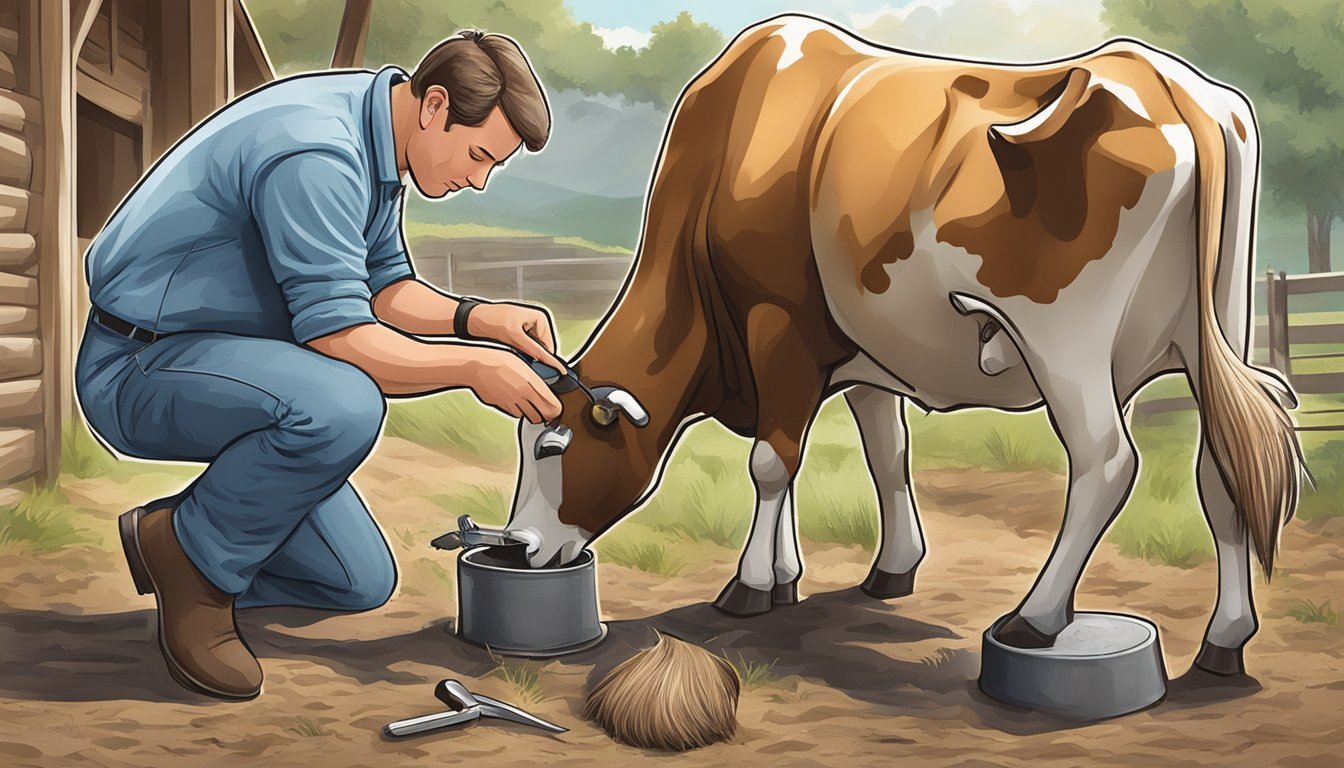What Are the Best Practices for Hoof Care to Prevent Foot Rot in Livestock?
Maintaining the health of livestock is critical for the success of farms and ranches, and a key part of this is preventing foot-related diseases such as foot rot. Foot rot in cattle, sheep, and goats is a painful condition typically caused by a bacterial infection, which thrives in wet, dirty environments. Adequate hoof care is vital because it not only helps in maintaining animal mobility but also ensures overall animal welfare and productivity. By incorporating best practices for hoof care, farmers and ranchers can significantly reduce the incidence of foot rot within their herds.
Ensuring that animals are kept in clean and dry conditions is fundamental in preventing the onset of foot rot. When exposed to less mud and standing water, the risk of infection drops, as bacteria prefer moist environments. Regular hoof inspections and trimming are essential components of good hoof care, since overgrown hooves can lead to injury and disease. Hoof trimming should happen at appropriate intervals, ideally in softer conditions such as after a period of rainy weather, to facilitate easier cutting and shaping of the hoof walls.
Sometimes, additional measures are necessary to protect livestock from foot rot. Adding iodine to mineral mixes or utilizing antibacterial footbaths can serve as preventative measures. These interventions can be specifically tailored to address and mitigate the disease risk factors present in different environments. Implementing strategic treatments and environmental management protocol can play a significant role in keeping hooves healthy and preventing conditions like foot rot.
Understanding Foot Rot
Foot rot is a debilitating condition that affects the hooves of various livestock, leading to lameness and reduced animal welfare. This section addresses the causative agents, symptoms for diagnosis, environmental influences, and species-specific factors that contribute to foot rot.
Causative Agents of Foot Rot
The primary bacteria responsible for foot rot are Fusobacterium necrophorum and Dichelobacter nodosus. These bacteria synergistically create an infection that thrives in the compromised soft tissue of an animal's hoof. While F. necrophorum is commonly found in soil, D. nodosus is specific to hoofed animals, thus spreading mainly through direct contact or infected ground.
Symptoms and Diagnosis
Diagnosing foot rot involves identifying the clinical signs of the infection, including lameness, swelling, and an unpleasant smell arising from the affected hoof. Examination often reveals necrotic areas of hoof tissue, potentially accompanied by a purulent discharge. Pain is evident by an animal's reluctance to stand or walk.
Impact of Environmental Factors
The environment plays a significant role in the development and spread of foot rot. Warm and wet conditions, such as those found in high rainfall areas or muddy environments, exacerbate the likelihood of infection. Conversely, maintaining a dry environment for the animals can help prevent the prevalence of foot rot, as bacteria struggle to survive in these conditions.
Foot Rot in Different Species
Foot rot affects a range of hoofed animals, including sheep, cattle, goats, deer, and even horses. Each species may exhibit varying symptoms and severity of infection, but the fundamental treatment approach of managing the environment and addressing the infection remains consistent. Proper hoof care, such as trimming and cleaning, is crucial across all species to prevent hoof rot.
Preventative Practices
Preventative hoof care practices are central to minimizing the risk of foot rot, promoting animal health and welfare. They hinge on meticulous management, which includes regular hoof trimming, balanced nutrition, selective breeding, and maintaining proper environmental conditions.
Effective Hoof Trimming Techniques
Regular hoof trimming is essential in foot rot prevention. Trimming hooves during or after wet weather can be easier, as the hoof walls are softer, making the process less stressful for the animal. An effective technique involves removing overgrown parts of the hoof and ensuring a level bearing surface, which helps in preventing injuries that could lead to infections. It's important to clean and disinfect equipment between uses to avoid spreading pathogens among a herd or flock.
Nutrition and Hoof Health
A balanced diet supports hoof health and can enhance disease resistance. Proper nutrition involves providing livestock with adequate minerals, which may include iodine supplementation to promote overall health. Management practices such as testing forage and providing necessary feed additives ensure that animals receive all necessary nutrients for strong hoof growth and resilience.
Breeding and Genetic Management
Selection for genetic traits that confer hoof health and resistance to diseases like foot rot is a proactive strategy. Breeding decisions should prioritize animals that show a natural resistance to foot diseases, minimizing the genetic susceptibility within the herd or flock. It is also advised to avoid purchasing animals with a history of foot rot, thus preventing the introduction of the disease into healthy populations.
Environmental Management
Good sanitation is a cornerstone of preventive hoof care. This involves regular removal of manure and maintenance of dry bedding areas. Facility design should maximize drainage to reduce standing water around drinking and feeding areas, which can harbor bacteria. Utilizing footbaths containing formalin or other disinfectants can help control infection rates in environments where exposure to pathogens is high. Quarantine procedures for infected animals are vital, alongside regular examination of the herd or flock, to maintain a disease-free environment.
Treatment Strategies
Effective treatment strategies are crucial to resolve foot rot, a painful bacterial infection in the hooves of livestock. Immediate and appropriate measures can relieve lameness and prevent the spread to healthy tissue.
Using Antibiotics and Chemical Treatments
Antibiotics are a primary defense against foot rot, which is typically caused by a synergistic infection involving Fusobacterium necrophorum and other bacteria. A veterinarian may prescribe antibiotics to tackle the infection. Systemic antibiotics, administered either orally or by injection, are often recommended for more severe cases. Topical treatments, such as sprays or powders containing antibiotics, can be applied directly to the affected area. In some cases, an iodine supplement may be considered as a feed additive for prevention.
Foot Baths and Regular Soaks
Regular soaks in a foot bath containing disinfectants such as zinc sulfate or copper sulfate can help prevent and treat foot rot. A properly prepared zinc sulfate solution can be an effective preventive measure when used in footbaths. It's important to ensure that the concentration of the solution is effective and that the foot bath is long enough to allow the solution to make proper contact with the hoof.
Isolation and Containment
Infected animals should be quickly isolated to minimize the spread of the infection. Quarantine protocols should be enforced, separating the infected group from healthy animals. During this time, consistent monitoring and treatment are critical. Containment is aimed at stopping transmission and involves diligent cleanliness and dryness of the environment for effective healing.
Culling and Herd Management
In cases where individual animals are chronic carriers of foot rot or repeatedly develop infections despite treatment, culling may be necessary for the overall health of the herd. Effective herd management includes regular hoof inspections and trimming to maintain hoof health. Removal of chronically infected animals can prevent them from serving as a reservoir of infection. Reduced crowding, proper manure management, and ensuring dry conditions in pens and barns are key for preventing foot rot.
Monitoring and Ongoing Management
Effective hoof care to prevent foot rot in livestock hinges on diligent monitoring and ongoing management. These practices ensure early detection and treatment of hoof problems, potentially reducing the incidence of lameness and promoting overall herd health.
Record Keeping and Regular Inspection
Record keeping plays a crucial role in hoof care, allowing for the tracking of each animal's hoof health history and treatment efficacy. Regular inspection of hooves should be scheduled, as consistent check-ups facilitate early diagnosis and intervention. During inspections, any signs of limp or discomfort should be noted, as these may be indications of developing issues such as foot rot, which is often caused by anaerobic bacteria.
Inspect hooves bi-weekly or monthly depending on the herd size and conditions.
Document all findings and treatments to identify patterns or recurrent issues.
Understanding Resistance Development
Over time, pathogens causing hoof infections can develop resistance to treatments. Management practices must adapt to address this resistance, requiring a close partnership with a veterinarian. They can recommend control measures and treatments that minimize the risk of resistance, ensuring the health and mobility of the animals.
Use antibiotics judiciously and follow a veterinarian’s prescriptions to avoid promoting resistance.
Review and adjust foot bath formulations and concentrations regularly.
Vaccination and Disease Control
Vaccination can be a preventative measure against some bacteria causing hoof diseases. Along with vaccinations, proper disease control practices—such as quarantining infected individuals—help prevent the spread of infection. Preventative strategies should also include maintaining a clean, dry environment to inhibit bacterial growth.
Administer vaccinations as part of annual health check-ups.
Implement strict biosecurity measures to control the spread of infections.
Implementing robust monitoring and management practices is essential for maintaining hoof health and preventing conditions like foot rot. These actions help in preserving the livestock's welfare, productivity, and longevity.
Additional Considerations
In tackling foot rot, it is imperative to not only consider the immediate implications for affected livestock but also to recognize the indirect effects and related conditions that influence overall herd health and industry sustainability.
Foot Rot in Wildlife and Non-Livestock
Although foot rot is commonly associated with domestic livestock, wildlife and non-livestock animals are not immune to similar infections. Situations where domestic animals interact with or are in proximity to wildlife can create pathways for cross-species transmission. Effective control measures for foot rot in livestock should, therefore, extend to monitoring and managing wildlife health, to minimize indirect impacts on sheep production and the broader animal population.
Related Hoof Diseases
Aside from foot rot, caused largely by Bacterioides nodosus, other hoof diseases such as digital dermatitis and interdigital dermatitis can compromise the hoof integrity and animal welfare. The management of these diseases should adopt a holistic approach to hoof care, which includes regular hoof inspections and treatment protocols adapted for a range of hoof diseases. Proactive prevention is vital for maintaining productivity and reducing the need for invasive treatments or extensive use of sheep handling equipment during outbreaks.
Impact on Industry and Animal Welfare
Foot diseases, including foot rot, pose a significant risk to the sheep industry's productivity. Outbreaks can lead to substantial economic losses due to reduced animal mobility, decreased feed conversion, and impacts on wool quality. Moreover, these conditions can severely affect animal welfare. Shows and other events that result in large gatherings of animals have the potential to spread diseases unless stringent biosecurity measures are in place. Industry stakeholders must prioritize both economic and ethical considerations by integrating best practices in hoof care into their animal health protocols.
By addressing each of these additional considerations with a thorough and mindful approach, the incidence and severity of foot rot and related diseases can be minimized, thus safeguarding the health and welfare of the livestock and, consequently, the vitality of the sheep industry.
Extension Services and Professional Advice
For those looking to maintain the health of their livestock's hooves, active engagement with extension services and collaboration with veterinarians provide crucial resources. Leveraging professional advice from these entities helps in implementing effective prevention strategies against foot rot.
Engaging with Extension Agents
Extension agents offer specialized knowledge and guidance rooted in the latest research and localized expertise. They help livestock owners understand the importance of environmental management and recommend best practices for hoof hygiene. Utilizing resources like the article from Kansas State University, which emphasizes the role of proper hoof care in foot rot prevention, is essential.
Collaboration with Veterinarians
Veterinarians are pivotal in diagnosing and treating foot ailments, including foot rot. Regular hoof examinations by a veterinarian, as suggested by NC State Extension Publications, are vital. They can provide treatments and advise on appropriate foot trimming schedules, ensuring the health and mobility of the cattle. Additionally, veterinarians can suggest customized care plans, taking into account the specific needs and conditions of the animals.






